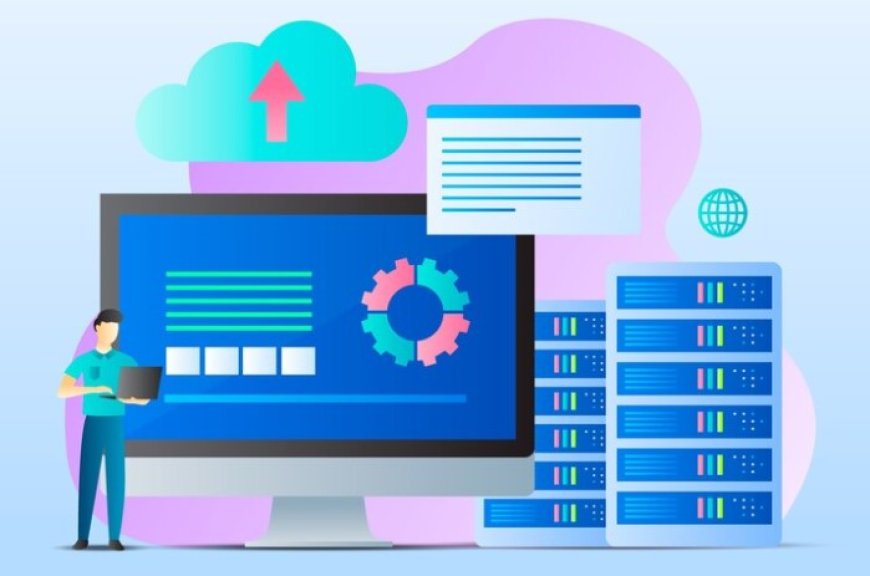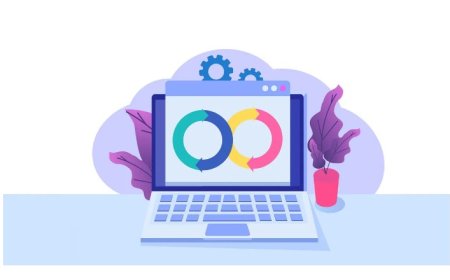Serverless Computing: A Comprehensive Guide
Explore the world of Serverless computing with our comprehensive guide. Learn key concepts, benefits, and implementation strategies for seamless integration.

Serverless computing, a tech approach, means you don't need to manage servers. Think of it like outsourcing tech tasks to pros. It's not new; it's been evolving. Here's a quick intro: serverless is defined by not worrying about servers, it evolved over time, and key traits include automatic scaling and event-driven actions. Simple, right? It's like getting your tech work done without stressing about the nitty-gritty server stuff!
In the world of computing, things used to rely a lot on traditional servers. These servers handled everything, but they came with their fair share of problems. Imagine having to predict exactly how much server space you need all the time — it's like trying to guess how much pizza your friends will eat at a party. If you guess wrong, you either have too much pizza (wasted resources) or not enough (frustrated friends).
Traditional servers face challenges like this. They can be expensive, and managing them can be tricky. Enter serverless computing, our hero in this digital story. Serverless doesn't mean there are no servers; it just means you don't have to worry about them as much. They magically appear when needed and disappear when not, like a good friend who shows up to help with the pizza party and vanishes when it's done.
The rise of serverless computing is like finding a solution to the pizza party problem. It's a smarter, more flexible way of doing things, and people are excited about it because it helps save money, makes life simpler, and lets businesses focus on what they do best without stressing about server complications.
Common Misconceptions about Serverless Computing
Sometimes, when we talk about serverless computing, people get a bit mixed up. They might think it means there are absolutely no servers involved. Well, the truth is, there are still servers, but you don't have to juggle them like before. It's like having a magic kitchen where chefs appear when needed, and you don't have to hire them full-time.
Now, diving into the complications, let's clear up some common misunderstandings. Serverless isn't a silver bullet that solves everything. Some folks believe it's the cure for all tech headaches, but it's more like a helpful tool in the toolbox.
When it comes to challenges in adopting serverless ways, there's the learning curve. It's a bit like switching from cooking with a recipe to creating your own dishes. It takes time to get used to the new ingredients and techniques.
Comparing serverless to traditional servers is a bit like comparing a modern, sleek car to an old, clunky one. Sure, the old car has its charm, but the new one is faster, more efficient, and just easier to handle. That said, it's not a one-size-fits-all solution, and understanding these differences helps make the best choice for specific situations.
What are the Core Components of Serverless Computing?
Let's take a closer look at serverless computing, breaking it down into bite-sized pieces. Imagine you're building a digital world, and instead of worrying about every detail, you have three magical helpers: Function as a Service (FaaS), Backend as a Service (BaaS), and Event-Driven Programming.
-
Function as a Service (FaaS): Picture FaaS as mini-wizards. You give them a specific task (like turning ingredients into a cake), and they magically appear to do just that. In serverless land, FaaS lets you run bits of code without having to manage the entire server. It's like having tiny chefs who only show up when there's cooking to be done.
-
Backend as a Service (BaaS): Now, think of BaaS as the behind-the-scenes support crew. They handle things like databases, user authentication, and other backstage tasks. Instead of stressing about these details, you let BaaS take care of them, freeing up your time to focus on the main show—the unique features of your app.
-
Event-Driven Programming: Imagine your app as a big party, and every action (like someone RSVPing or bringing snacks) triggers a reaction. That's event-driven programming. It means your app responds to what's happening, making it dynamic and interactive. No need to manually keep track of every little thing; your app stays lively and engaged with its users.
Scalability and Efficiency in Serverless Computing
-
Automatic Scaling: Just like having extra chefs magically appear when the pizza orders start pouring in, automatic scaling ensures your serverless system can handle a sudden increase in tasks. It's like having a dynamic kitchen that adapts to the number of hungry customers.
-
Resource Allocation: Think of resource allocation as giving your chefs the right tools. You wouldn't use a teaspoon to flip a giant pancake; you'd use a spatula. Similarly, with serverless, resources (like memory and processing power) are allocated precisely as needed, preventing wastage and keeping things running smoothly.
In this serverless world, these components and scalability measures work together seamlessly, making your digital endeavors more efficient, flexible, and stress-free. It's like having a magical team that handles the details, so you can focus on creating an awesome experience for your users.
Security Best Practices in Serverless Architectures:
-
Authentication and Authorization: Think of this like a VIP party list. Only the invited guests (authorized users) get in. It's like having a bouncer at the door, making sure only the right people access your stuff.
-
Data Encryption: Imagine your data is a secret message. Encryption is like putting it in a super-secure lockbox. Even if someone tries to peek, all they see is jumbled-up letters.
-
Monitoring and Auditing: This is like having security cameras in your digital space. You want to know who's been where and what they did. It's like keeping a watchful eye on your online house.
Contrasting Serverless and Microservices:
-
Resource Management: Picture this as managing your kitchen supplies. With serverless, it's like having a magic pantry that automatically restocks when you're running low. Microservices, on the other hand, are like traditional grocery shopping — you decide what to buy and when.
-
Development and Deployment: Think of serverless like ordering takeout. You focus on enjoying the meal (your application), and the rest (development and deployment) is taken care of. Microservices are more like cooking at home — you have more control but also more responsibility for the entire process.
So, in the digital world, it's like choosing between a hassle-free party with security guards and automated snacks (serverless) or a DIY gathering where you manage everything yourself (microservices)
Future Trends in Serverless Computing
As we look ahead, the future of serverless computing is like peeking into a tech crystal ball. Here's what's cooking:
Innovations and Advancements in Serverless Technologies:
-
Smarter Serverless: Imagine serverless getting even smarter! Innovations may bring better ways of handling tasks, making the whole system even more efficient.
-
Faster Speeds: Picture things happening in a snap. Future serverless tech might make your applications run faster than ever, giving you a speed boost in the digital race.
Integration with Emerging Technologies (e.g., AI, IoT):
-
Friends with AI: Serverless and AI becoming pals is on the cards. They might team up to create applications that learn and adapt, making technology feel more human-like.
-
IoT Harmony: Expect serverless to dance well with the Internet of Things (IoT). This partnership could lead to smart devices working seamlessly together, like a symphony of digital harmony.
Serverless computing brings some cool benefits to the tech table. It's like having a superhero for your digital tasks - saves money, scales easily, and simplifies your tech life. So, if you're thinking, "Should I give this serverless thing a shot?" the answer is a thumbs up! Dive in, experiment, and see how it fits your needs. It's a bit like trying a new recipe – you won't know how awesome it is until you taste it. Looking ahead, the future of serverless architectures seems promising, with more innovations and exciting possibilities on the horizon..


























































